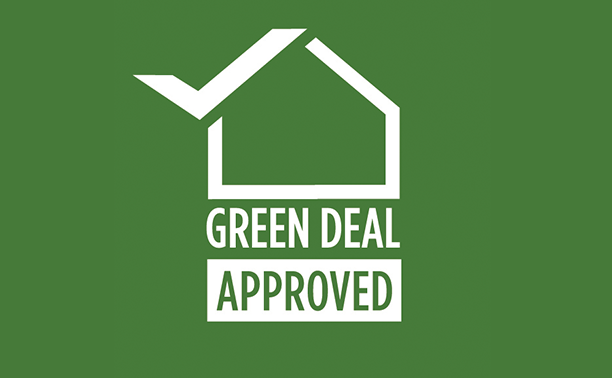
Revised Green Deal supports the private rented sector
by Tim Willmott : Comments Off on Revised Green Deal supports the private rented sector
The private rented sector in England & Wales, accounts for around 4.2 million homes, but it has never been properly targeted or incentivised for energy efficiency. Action to improve the energy efficiency of private rented properties is badly needed, because:
- One in five households in the English private rented sector is fuel poor – almost double the national average.
- Around one in ten properties are in the lowest EPC bands [F&G].
- One in ten private rented sector households has excess cold problems – a major cause of ill health for occupants.
Investment in energy efficiency in the sector has been slower, because landlords own the properties and as such are responsible for paying for any improvements, but it is the tenants who will benefit from having warmer homes and lower bills.
THE GREEN DEAL IS A WIN-WIN FOR LANDLORDS AND TENANTS
Green Deal finance can be a game changer for homes in the private rented sector, because the Green Deal’s “pay-as you-save” principle creates a win-win for both landlord and tenant. The tenant enjoys a warmer home, while they help to meet the cost of the energy efficiency measures through the savings made on their electricity bills. Meanwhile landlords benefit from having an improved property, paid for with help from the tenant.
Earlier this month a clarification on how consumer credit legislation works with Green Deal finance took effect giving Green Deal finance providers the confidence they need to lend at scale. This means landlords can now improve their properties for the benefit of themselves and their tenants – and the sector is keen to get going.
This is a double win for landlords, because research shows that even a relatively modest jump in Energy Performance Certificate (EPC) rating can increase a property’s value.
WHAT’S IN IT FOR TENANTS?
Families in private rented properties will have more comfortable homes and lower energy bills. Warmer homes can help combat the effects of cold on health and wellbeing too.
Under the Green Deal, tenants who give consent for energy efficiency measures to be installed, pay for the cost of those measures via their electricity bill, while benefitting from a cosier home.
The amount that can be borrowed to pay for improvements using Green Deal finance is protected by the Golden Rule. This limits repayments to the level of expected energy savings. Tenants will only pay for Green Deal repayments while they live in the property and are benefitting from the improvements. When a tenant leaves the property the responsibility for repayments will pass to the new bill payer or the landlord if the property is not re-let.
HELPING FUEL POOR HOUSEHOLDS
Installing energy efficiency measures can have an impact on fuel poverty, helping more families achieve an acceptable level of comfort without fear for their energy costs soaring.
The Hills Review recently identified poor energy efficiency as a key driver of fuel poverty. In 2011 there were 190,000 private rented sector households in fuel poverty in England and living in a house with an F or G EPC rating. Fuel poor tenants can’t afford to heat their homes adequately. Of course, the Energy Company Obligation (ECO) is there to help the poorest and most vulnerable to access the benefits of energy efficiency. However, for those households that don’t qualify for help under ECO, improvements installed using Green Deal finance enable them to benefit from warm and more comfortable homes.
HOW DOES THIS BENEFIT LANDLORDS?
Properties that have had energy efficiency improvements may be more attractive to prospective tenants, helping the landlord to rent out the property more easily and reduce costs incurred through periods where the property is empty.
Under Green Deal finance landlords do not have to cover all the costs upfront to install energy efficiency measures to their properties, as some of the costs are repaid by the electricity bill payer through savings on their energy bills. The landlord would only have to cover Green Deal charges during periods when the property is empty.
Landlords could also see a return on investment in energy efficiency as properties with higher EPC ratings attract higher prices when they are sold. Research published by DECC shows a link between a home’s energy efficiency and its sale price:
- Dwellings with an EPC rating of F and E sold for around six per cent more than those with a G rating.
- Those rated D sold for eight per cent more than a G rated property.
- Dwellings rated C sold for ten per cent more than a G rated property.
- And those rated A or B sold for around 14 per cent more than G rated properties.
DOING MORE TO HELP LANDLORDS AND TENANTS
The Government wants to encourage landlords to improve their properties. Later this year it will set a new fuel poverty target to improve energy efficiency in the coldest, low income homes. It plans to consult on a new Fuel Poverty Strategy to refocus our efforts at the most vulnerable. This will provide certainty about the Government’s long term aims. We want to ensure that the very worst homes are improved, and following initial engagement with the sector we intend to consult shortly on new regulations to take effect in 2018.
The Government is already helping private landlords to improve their properties. Last year a £450 million package was announced for the next three years to boost household energy efficiency. New schemes, which will be aimed at households and private landlords, will be designed to dovetail with the Green Deal and stimulate the flow of more private finance into energy efficiency. We will be providing more detail on these schemes in the coming months.





Comments are closed